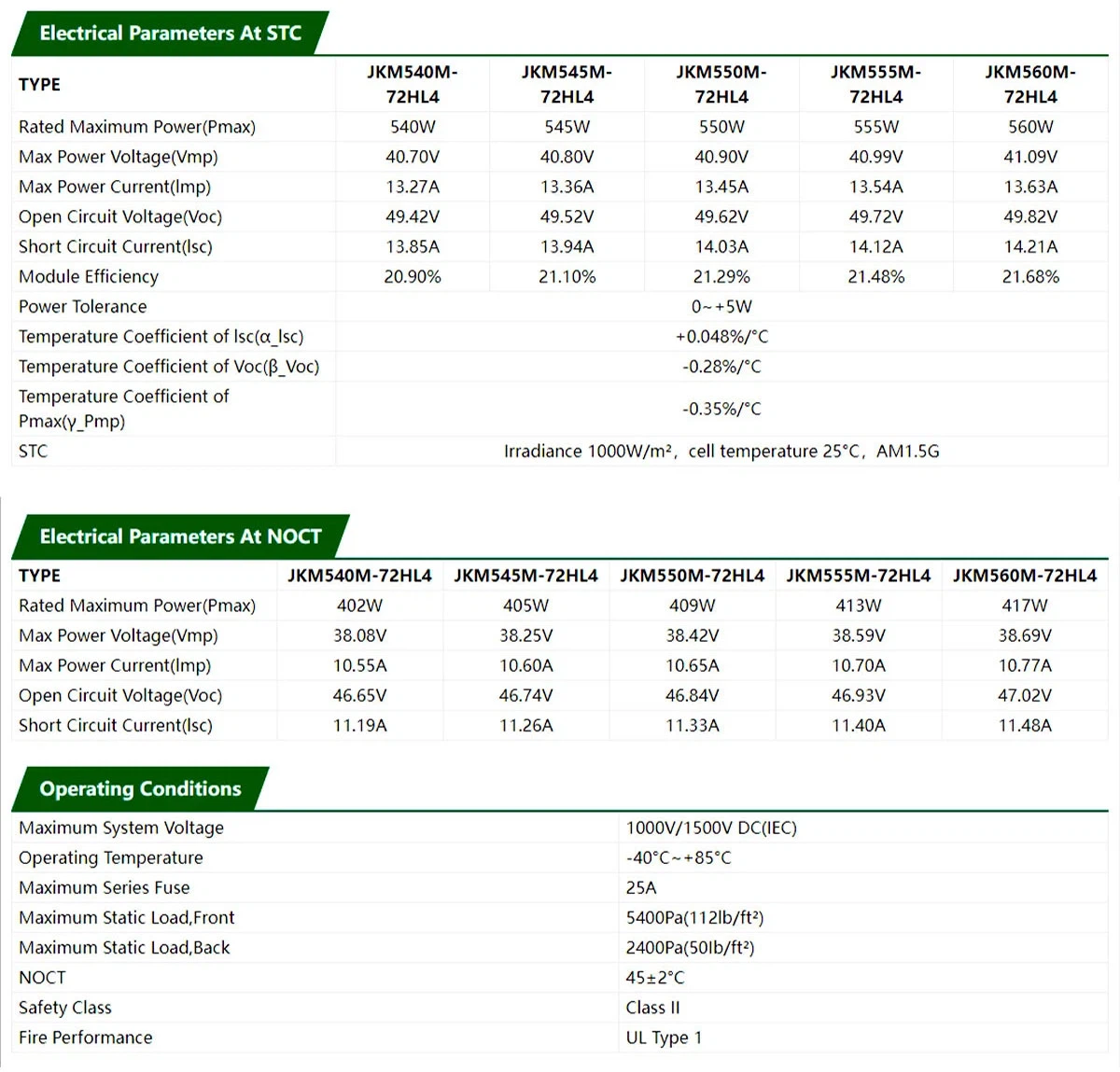What Are The Main Performance Parameters Of Solar Panels?
Solar energy is a clean, renewable, and abundant source of energy that has the potential to play a vital role in meeting the world's energy needs. One of the most important components of a solar energy system is the solar panel, which is responsible for converting sunlight into electrical energy. Solar panel parameters are given by the manufacturer under STC (Standard Test Conditions). Under STC, the corresponding solar radiation is equal to 1000W/m2, the battery operating temperature is equal to 25°C, and Am is equal to 1.5.
1. ISC (Short Circuit Current)
Short circuit current (ISC) is the current that flows through a solar panel when it is short-circuited. It is an important parameter that indicates how much current a solar panel can deliver at maximum power output. ISC depends on the size of the solar panel and the level of irradiation it receives. The higher the ISC value, the higher the current a solar panel can generate.
2. VOC (Open Circuit Voltage)
Open circuit voltage (VOC) is the voltage that a solar panel generates when it is not connected to any load. It is an important parameter that indicates the voltage level of a solar panel. VOC depends on various factors such as the size of the solar panel, the level of irradiation it receives, and the temperature of the solar panel. The higher the VOC value, the higher the voltage a solar panel can generate.
3. PM (Peak Power)
Peak power (PM) is the maximum power output that a solar panel can generate under standard test conditions (STC). STC refers to a set of conditions that are used to evaluate the performance of solar panels, such as a temperature of 25 °C, irradiance of 1000 W/m2, and a spectrum of air mass 1.5. PM is an important parameter that indicates the maximum power output a solar panel can deliver. The higher the PM value, the higher the power output a solar panel can generate.
4. Imp (Maximum Power Current)
Maximum power current (Imp) is the current that a solar panel generates at the maximum power output point. It is an important parameter that indicates the maximum current a solar panel can deliver. Imp depends on various factors such as the size of the solar panel, the level of irradiation it receives, and the temperature of the solar panel. The higher the Imp value, the higher the current a solar panel can generate.
5. Vmp (Maximum Power Voltage)
Maximum power voltage (Vmp) is the voltage that a solar panel generates at the maximum power output point. It is an important parameter that indicates the voltage level at which a solar panel operates at maximum power output. Vmp depends on various factors such as the size of the solar panel, the level of irradiation it receives, and the temperature of the solar panel. The higher the Vmp value, the higher the voltage a solar panel can generate.
6. FF (Fill Factor)
Fill factor (FF) is the ratio of the maximum power that a solar panel can deliver to the product of its open-circuit voltage and short-circuit current. FF is an important parameter that indicates the efficiency of a solar panel. The higher the FF value, the more efficient a solar panel is at converting sunlight into electrical energy.
7. ƞ (Efficiency)
Efficiency (ƞ) is the ratio of the electrical power output of a solar panel to the solar energy input. It is an important parameter that indicates the overall efficiency of a solar panel. The higher the efficiency value, the more efficient a solar panel is at converting sunlight into electrical energy.
In conclusion, solar panels are designed to operate under various conditions, and their performance is evaluated based on various performance parameters. These parameters include ISC, VOC, PM, Imp, Vmp, FF, and efficiency. These parameters indicate the performance of a solar panel in generating electrical energy from sunlight. By understanding these parameters, we can select the most suitable solar panels for our specific application and design an efficient solar energy system.


